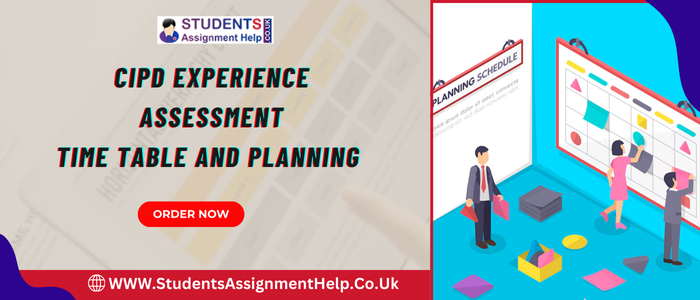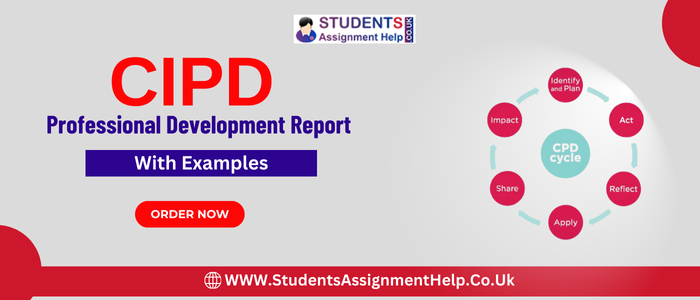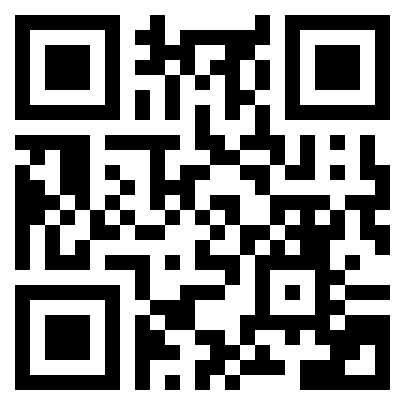Dissertation Results Section With Examples
So many students might have to chew the stones while crafting the dissertation results page, and we feel your pain. This is why we are providing all the UK’s university students, valuable guidance on how to write the results section of a dissertation and many worthy examples of how you should make your dissertation results section. So, whether you are a Bachelor’s, Master’s or PhD, this one guidance will be helpful for you and guide you towards achieving a wonderful result page of your dissertation. This will help you place your findings very clearly and objectively, without interpretation and bless you with deep knowledge on how to make the dissertation result section concise, factual, and focused.

What is the Dissertation Results Chapter?
Before you seek guidance for crafting your results page for the dissertation, student needs to take a deep dive into its core purpose and structure. Understanding the intent behind this chapter will ensure the meeting of writing this chapter and will possibly eliminate most of the possibilities of making any mistake in your results or findings chapter.
So, here’s a quick overview of the subject, which will help you understand all the essentials of the results chapter:
A results page of a dissertation is also referred to as the findings chapter of the dissertation. This chapter typically involves all the findings or the collection of data that is used to make the dissertation. Here, the author of the dissertation has to write the findings without any interpretation or analysis, they just place all the findings or the highlights of the data trends as direct information. They do not contextualise the data nor discuss that data in that chapter. Here are the major elements that are contained in a findings chapter:
- Data presentation: by charts, graphs, and tables.
- Contextualization of information. Explanation of the meaning of data.
- Important information related to participants or respondents.
- Key information related to research questions.
- Findings are drawn by analysing the information gathered through secondary sources.
After knowing the things to be included in the results section, let’s look at the way of writing the results section for the dissertation.
cta_blogs_1
How to Write an Effective Dissertation Results Chapter: Step-by-Step Guidance for UK Students
Lay the Groundwork for an Accurate Dissertation Result
Before diving into the process of writing the results page of your dissertation, it’s essential to prepare properly. After all, the results chapter is all about the structure, clarity and accuracy, and all these factors depend entirely on the term “ what you have done with your data”. So, here are the things that you need to care about while crafting the results page of your dissertation:
- Finally, your data analysis
- Understand your university’s formatting styles and other guidelines
- Organise your findings in a clear and logical way
Here is how you are advised to do it:
Finalising Your Data Analysis (Quantitative & Qualitative)
Completing and finalising the data analysis is the most essential task to be done before writing your results section of the dissertation. Here’s the finalising your data means that:
- The analytical work on your data is 100% completed
- You‘ve identified the core findings of your research
- You have worked out all the errors, inconsistencies & gaps, and your data is flawless and cleaned.
- Your analysis is aligned with all the objectives of your dissertation research.
Review the Guidelines of Your University
Before you initiate the writing of your results section, you must gain an in-depth knowledge of your university guidelines, provided by your university professor. This part holds a special place in the process of writing your findings chapter. This is because this will help you in including all the elements that are mandatory to add in the
Before writing the results section for the dissertation, you need to review the guidelines provided by your professor. The guideline will help you in determining the things which you need to include in your results section.
While reviewing the guidelines, you should focus on the limitations and length of content to be included in the results section. Through reading the guidelines, you will be able to judge the expectations of the reader from the specific section.
cta_blogs_2
Organise Your Findings in a Clear and Logical Way
Organising all the findings is one of the most important aspects of writing the results chapter. This is because a clear organisation helps the reader/assessors to easily follow your research story and helps them understand how your data answers your research questions.
To organise your findings properly, you should start by selecting a structure that suits your research. You may use the following methods:
🔹 By Research Questions or Hypotheses
Present each research question as a subheading, then report the findings that answer it. This is especially useful for quantitative or mixed-methods research.
Example Subheading:
Findings Related to RQ1: How do consumer preferences vary by age group?
🔹 By Themes (Qualitative Research)
If you conducted interviews or open-ended surveys, then organise findings by emerging themes or categories (from your coding process).
Example Subheading:
Theme 1: Emotional Responses to Sustainability in Fashion
🔹 Chronological or Procedural Order
If your research has followed stages like Phase 1: survey, Phase 2: focus group etc., then you may present your findings in the order you collected your data.
🔹 Create tables and figures for the presentation of information
You should properly number the tables and figures. Data included in the table should be self-descriptive. You should include important and complete information in tables. Figures and tables should be presented in such a manner that the reader, by analysing them, can develop an understanding of the findings of the research.
Structuring Your Dissertation Results Chapter Effectively
The results chapter is one of the most technical sections of your dissertation sp structuring this is significantly essential. A structure results chapter helps readers clearly understand your findings without confusion, while also keeping your work in line with academic standards.
1. Start With a Short Introduction (Optional)
While not always required, a brief introductory paragraph can set the stage for your reader. It can:
- Remind the reader of the research aims or questions
- Outline what type of data is being reported (quantitative/qualitative/mixed)
- Explain how the results are structured in the chapter
Example:
“This chapter presents the findings from both the quantitative survey and the qualitative interviews conducted with UK university students. The results are structured according to the three core research questions.”
2. Present Results in a Logical Order
Depending on your methodology, choose a structure that best fits your study:
🔹 By Research Question or Hypothesis
This is Ideal for empirical and hypothesis-driven research. In this type of findings structure, the writer mentions a question in each section and writes its corresponding findings.
Example: RQ1: What is the impact of remote learning on academic performance?
Results from t-tests and student feedback are reported here.
🔹 By Themes (for Qualitative Research)
If you’ve collected data through interviews, open-ended surveys, or focus groups, then structuring your results by themes is ideal. Themes, here, are recurring ideas or patterns that emerge from your data during the coding process. Each theme should have a clear title, a short explanation, and supporting participant quotes to illustrate the point. For example, a theme like “Digital Burnout Among University Students” could include quotes highlighting fatigue from prolonged screen time. This approach keeps qualitative findings organised and easy to understand.
🔹 Chronological Order
If your study involved sequential steps, like multiple phases of data collection, this method helps keep things organised.
Example: Phase 1: Survey Results → Phase 2: Focus Group Results
cta_blogs_3
3. Use Subheadings and Visual Aids
When you are writing your data, try to break down the whole matter into clear and consistent headings & subheadings. This will make a clear structure, simplify the matter and help the reader to read it better. Here is how you can present your data in a simplified way:
Support your data with:
- Tables – for numerical data comparisons
- Graphs – for trends and distributions
- Charts or Figures – for visual interpretation
Tip: Label all visuals properly (e.g., Table 2: Gender Distribution of Respondents) and refer to them in your text. Don’t leave them hanging!
4. Write Objectively – No Analysis Yet
Remember: this chapter is for reporting findings only. Do not interpret or explain what the results mean—that’s for your Discussion chapter. So, by keeping these points in your mind, you need to avoid the phrases like: this suggests, this implifies, etc. instead of these, you may use the phrases after or before your findings like: this data shows, x% of participants are, and more. In short, try to use a neutral tone, factual language and avoid judgmental sounds.
Here’s a brief on the preference for your language in the results chapter:
Use factual and neutral language like:
- “The majority of participants reported…”
- “The analysis showed a statistically significant relationship (p < .05)…”
- Avoid words like “suggests”, “proves”, and “supports”—those belong in the next chapter.
5. Summarise Key Points (Optional)
After each section or at the end of the chapter, you can include a short summary paragraph that recaps the key findings. This can help transition smoothly into the discussion.
Example:
“The findings reveal three main trends in student engagement, with increased screen time emerging as a key factor impacting focus and wellbeing.”
Sample Structure Layout
Here’s a practical layout you can follow, especially if you’re working with both quantitative and qualitative data:
- Introduction to the Chapter (Optional but recommended)
- Section 1: Participant Overview/Demographics
- Section 2: Results by Research Question/Hypothesis
- Section 3: Tables, Charts, and Graphs
- Section 4: Summary of Findings (Optional)
If your research involves mixed methods, create two separate sections—one for quantitative, one for qualitative, followed by a brief integrative summary if required.
Reporting Quantitative Results: Statistics and Data
One of the best techniques that can be utilised to present the research findings or outcomes is to design them considering the research questions. After that, you are required to present research findings for every subsection.
You should also include statistical analysis that has been performed for analyzing the results. It is very much essential for you to analyze whether the research findings of all the sections are relevant to the research questions. While presenting the outcomes you can mark the key trends, the relationship between data, etc.
This is a detailed explanation on how you can report the quantitative results in your findings.
Here are the steps that you can follow to report the quantitative results in the results section of your dissertation:
cta_blogs_1
Clean and Prepare Data
- Make sure to remove all the duplicate or incomplete responses from your data.
- You need to handle the missing values in your quantitative, very appropriately. To handle conditions like missing completely at random, use may use effective techniques like deletion. If not this, and you are dealing with problems like missing at random, you can use the effective data imputation techniques like mean substitution, regression imputation or multiple imputation. This is how you may use all the best fit techniques in each specific quantitative data cleaning, and clean the data to transform it into the best fit to insert in your dissertation with accurate answers.
Presenting Descriptive Statistics (Means, Frequencies, SD)
Run descriptive statistics on your data, this will help you summarise the data and understand the best features of your data. Here’s what you need to do in this:
- Calculate the central measures of your data, i.e. mean, median and mode.
- Examine the standard deviation to assess the variability of your data.
- Present the frequency distributions to explore and represent how often the values occur in the data.
Reporting Inferential Statistics (t-tests, ANOVA, Correlations, Regression, etc.)
- In this step, you need to formulate the hypothesis or answer the specific research questions. Here’s how you do it:
- Use appropriate statistical tests such as t-tests, ANOVA, regression, chi-square, or correlation.
- Ensure all assumptions of the statistical tests (e.g., normality, independence, homogeneity of variance) are checked and satisfied before interpreting the results.
Key Information: p-values, Effect Sizes, Confidence Intervals
- In the process of finalising the quantitative data, finally you’ll need to do is organise all the results clearly for reporting them in the dissertation.
- For this, use tables, charts and graphs, and present all the quantitative results clearly and accurately.
- Record all the key values, p-values, effect sizes, and confidence intervals. Report effect sizes and CIS alongside the main statistics and p-value.
Below is an example of presenting the Quantitative result. By seeing the example, you will get an idea about presenting the Quantitative result.
Example: Quantitative Dissertation Results Section
For instance, an investigation was performed on Fashion companies. The main objective of executing the investigation is to assist the company in the identification of the latest trends related to clothing. Market research or a survey has been conducted to collect information about the same. Findings of research reveal that there is a great demand for ethnic wear clothes in the market.
After completing an investigation, you can include the responses provided by people while presenting the research results. You can highlight the key clothing trends in the market. You can include graphs or charts for presenting the difference in choices of clothes among people over a period of time. Tables, graphs, charts, etc can be useful and helpful for presenting complex data.
Note: If in case the research findings are not at all relevant to the questions then in such a situation you can include extra information in the Appendix.
The regression analysis technique is utilized for testing the first hypothesis related to market demand. In the above example, fashion trends are an independent variable, and market demand is the dependent variable. The research findings reveal that changes in trends have a great influence on market demand for specific types of clothes.
cta_blogs_2
The outcome of regression analysis
| Independent variable | Dependent variable | Hypothesis | b* | t | P | Left Value | Right Value |
| Fashion trends | Demand for clothes | H1 | .19 | 3.00 | .06 | 0.02 | 1.13 |
Now, after gaining an understanding of the presentation of quantitative results. Let us look at how we could present Qualitative results.
Reporting Qualitative Results Section (Textual/Narrative)
About the qualitative investigation, the research findings might not be directly relevant to the research questions. Therefore, you need to organise your results section in the dissertation according to the themes. In simple words, you can utilise the thematic analysis techniques for presenting your findings.
You can prepare the theme based on research questions and answers provided by respondents. The thematic analysis helps you in analysing the pattern of the way responses are provided by participants. While presenting the research findings, you can include quotes as evidence to support the points. For instance, you can include a complete transcript of an interview in the appendix.
This is a brief on how you can present your qualitative findings in your findings. Here are the points that need to be noted while making the findings chapter of your dissertation:
Outlining Your Analytic Approach (e.g., Thematic Analysis)
- This is the short section at the start of your Results chapter where you explain how you got your findings. Remember not to state this information in detail, as you will cover this in detail, in the further methodology setion.
- Explain the thematic analysis that you have used here, whether you have used the reflexive thematic analysis, codebook or other methods like the mixed methods, explain that analytical approach here and let the assessor know why you have used this approach.
- After the intro, you need to show thw main findings here. the main finmdings here are usually called the themes or catagories. when yo mak ethe themes, yopu hav to make sure that each theme is clearly titled, focused on the major idea, and explained in a simple language.
- Introducing Your Main Themes or Categories Clearly
- Using Participant Quotes Effectively (Anonymisation is Key!)
- Weaving Narrative to Illustrate Findings
Presentation of Qualitative findings
Example: An investigation was performed for analyzing the view of people about video games as art. The research findings indicate that the majority of respondent perceives that video game is not a form of art. Some participants have stated that creativity is there in the creation of video games.
A statement given by one of the respondents is that I think the producer of video games has utilized their creative skills for designing video games and including different features in them. The fact which has been concluded from the investigation is that many people believe that video games are more artistic.
Often students get confused about the things to be included in a discussion, conclusion, and results section. They include interpretations and observations in the discussion which is wrong. It is very much important for students to gain knowledge about the difference between the result, discussion, and conclusion section. below the difference between all three has been discussed. The things you should include in the discussion, conclusion, and results section have been highlighted.
Revision and Editing
After completion of the results section, you should review it. As reviewing technique will help you in the identification of errors or misinterpretation of information.
While making a revision, proofreading, and editing the results section, you are required to ensure that the research results are presented systematically. You should also revise the objectives, aim, and introduction, and confirm that your research results are accurate.
Tip: You should maintain consistency in presenting your research results.
- While reviewing the results you can read loudly the content. It is the technique while it will help you in the identification of small errors which can further have a great influence on results.
- You can seek help from other people to check the results section.
Let’s look at an example which will help you in developing an in-depth understanding of the writing results section for the dissertation.
Related Service: Take Dissertation Help in the UK
cta_blogs_2
Dissertation Results Section Example
Example: An investigation is being performed to analyze whether women prefer to read a romantic novel as compared to men. In this investigation the independent variable is gender and the dependent variable is assumption related to the reading of books.
Gender is categorised into two categories: male and female. Therefore, it is also recognised as a categorical variable. The findings of the research can be presented using tables and graphs. You can present detailed information about the number of women who prefer to read Romantic novels.
Now, let’s look at the way of presenting the Quantitative results in a dissertation.
Results Vs Discussion Vs Conclusion Section in the Project Report
Results section: The results section in the dissertation includes the findings of the investigation. It only includes detailed information about observations in the context of Questions. The Results section in the dissertation does not include complete answers to key research questions. While writing the results section for a dissertation, you should not utilise words such as implies, suggest, etc. As all such words are more appropriate for writing the discussion section.
Discussion section: The discussion section in the dissertation includes the interpretation of the research results. In the discussion section of the dissertation, you need to relate your research outcomes to the literature review. You are also required to include the limitations of your study and the importance of research findings.
The results and discussion section in the project report are very important parts. A discussion on the result section helps the researcher in reaching the solution.
Conclusion section: The conclusion part of the dissertation consists of a summary of key research findings. It includes the complete answers to all research questions.
Below are a few tips which you can apply while presenting the research findings in the results section for the dissertation. These tips will help you in writing the results section in a proper manner.
Tips for Writing a Results Section for the Dissertation
Here are a few tips that you can utilise for writing the results section for the dissertation in a proper manner.
- Before writing the results section, you are required to consider things that you need to focus such as aim, objectives, and research questions. While writing the results section, you need to relate your findings to the research questions or objectives of the investigation.
- You can make use of graphs, tables, charts, etc., for systematically presenting information.
- After writing the results section, you are required to ensure that research findings are presented logically and systematically. One best techniques for organising your results section is to write themes, then a table containing the data, then a graph, and finally an interpretation of the information.
While presenting the research findings in the results section, you should understand that tables and graphs are important components of the results section. Therefore, you should provide a proper caption for tables and figures.
So, tis was a complete guidance on how to write the dissertation finding chapter, in which most of the students faces issues. We hope that this write up hs been proven to be a helpful guidance and helped you tackle your dissertation results chapter efficiently and flawlessly.
cta_blogs_3
Get Your Dissertation Results Chapter Done by Top UK Experts
Are you tired of forming an effective and well-organised results chapter, and continuously facing the struggles with mixing the results with discussion, proper use of visuals, consistent formatting and presenting the clear significance of findings? Then worry not! At the UK assignment helper.co.uk, you will get the top UK experts, who will make the result section of the dissertation for you. With their immense knowledge and experience in writing the dissertation, they will make sure that your reporting data is aligned with the hypothesis, the paper has a proper logical progression, and your results chapter presents all the crucial outcomes with the important highlights.
To avail of our services and hire your expert, all you have to visit our profile and fill the form, stating all of your requirements, and you will get an insightful and custom made dissertation results paper that is worth your every single penny.
In case you are struggling with any other chapters of your dissertation and do not want to take any chances, then the experts are ready to help you with any segment of your dissertation at affordable prices. Whether you require expert assistance in the literature review chapter of the dissertation, the methodology chapter of the dissertation, the discussion chapter of the dissertation help or even help with the whole dissertation write-up. You will get the best of our experts’ assistance here that too at very budget-friendly prices.
Along with serving you with the best quality work, we ensure that your results paper will be completely AI-free, plagiarism-free free and you will get a 100 per cent original report.
So, don’t waste your time and consistent efforts in making your dissertation chapters to your own, use them in other crucial taska instead. Till then, hire a writer for results section of dissertation and achieve the best outcome of your dissertation paper with the highest grades.
















